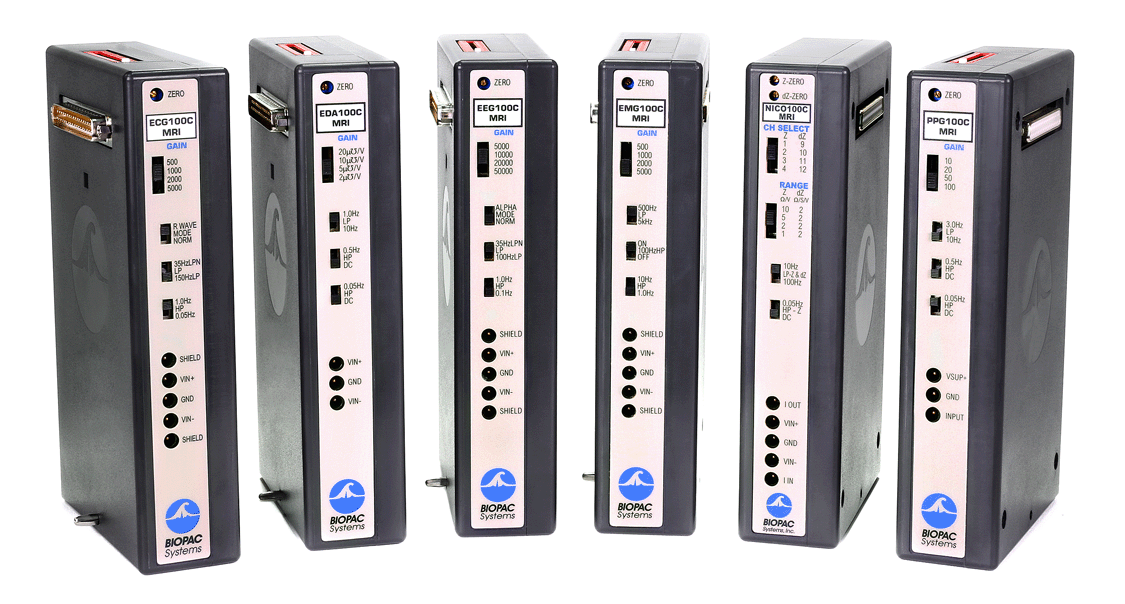MRI Magnetic Resonance Imaging

High-Quality Data for Human and Animal Protocols
BIOPAC offers a series of cables, electrodes, electrode leads, transducers, amplifiers, gating systems, and stimulus options for safe data acquisition of physiological signals in the MRI environment. Specially developed cables make it easy to interface between the control room and the chamber, and MR Safe and MR Conditional items are available. Electrodes and sensors are radiotranslucent and designed for use in the MRI. AcqKnowledge software includes automated data cleaning tools to further filter the data for high-quality results and easier analysis.
See also:
- Recommended Reading for MRI Data Acquisition
- Usage Declarations for MR, Radiotranslucent, and Radio-opaque Products
- Physiological Measurement in Magnetic Resonance Imaging Systems
- Connections for Physiological Signals in an MRI
- Safety Awareness Notes for Cables and Electrodes During MRI
Please contact BIOPAC if you don’t find the support information you are looking for.
Safety Guidelines for Recording Biopotential Measurements in the MRI Environment
B) Attach the EL508 or EL509 electrodes as close to each other as possible, on the subject’s skin, for the measurement.
C) Place electrodes in as straight of a line as possible which is perpendicular to the magnet’s axis.
D) Place electrodes between 3-5 cm apart, if possible; the larger the area between the electrodes, the stronger the MRI gradient artifact.
B ) Run the leads out of the chamber bore in the simplest (straightest) manner possible.
C) Do not allow the electrode leads to touch the subject’s bare skin. Electrode leads may heat up in the MRI.
– Use a thermal insulator (such as a blanket or towel) between the electrode lead and the subject’s skin.
– It’s also possible to use thermally-insulating foam jacket, similar to those used for insulating copper tubing, for placing the electrode leads to keep them away from the subject’s skin.
Stay Connected